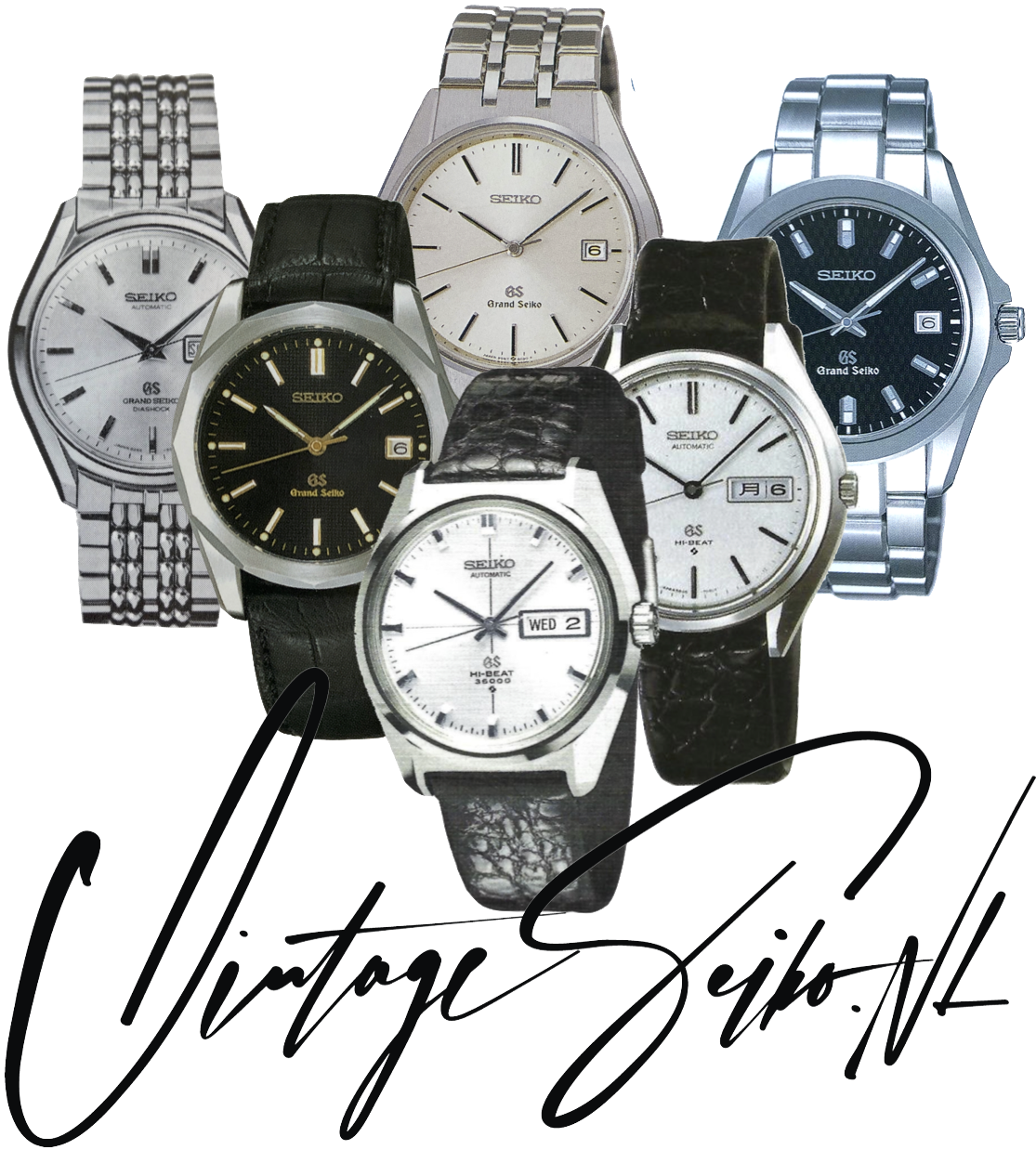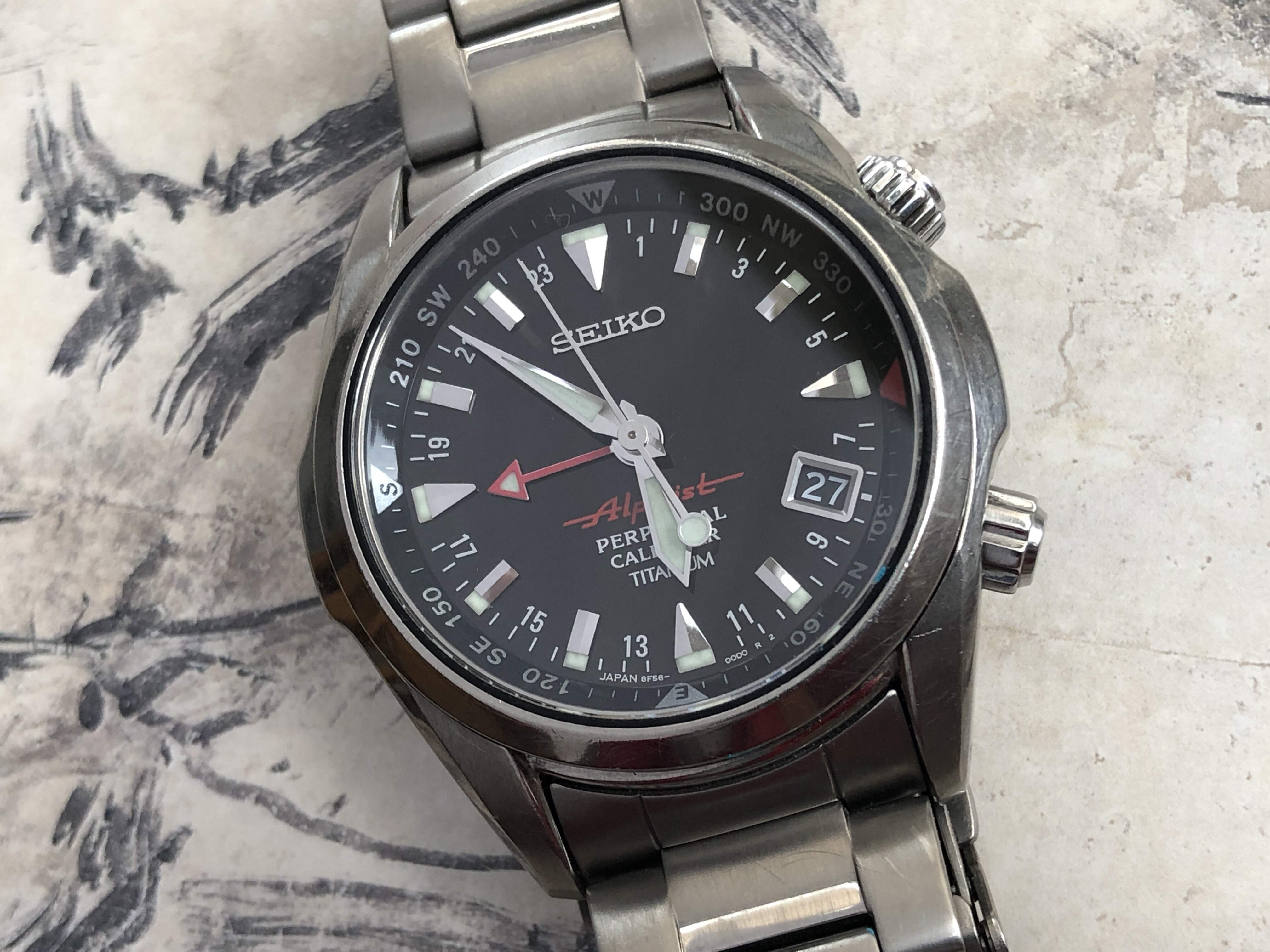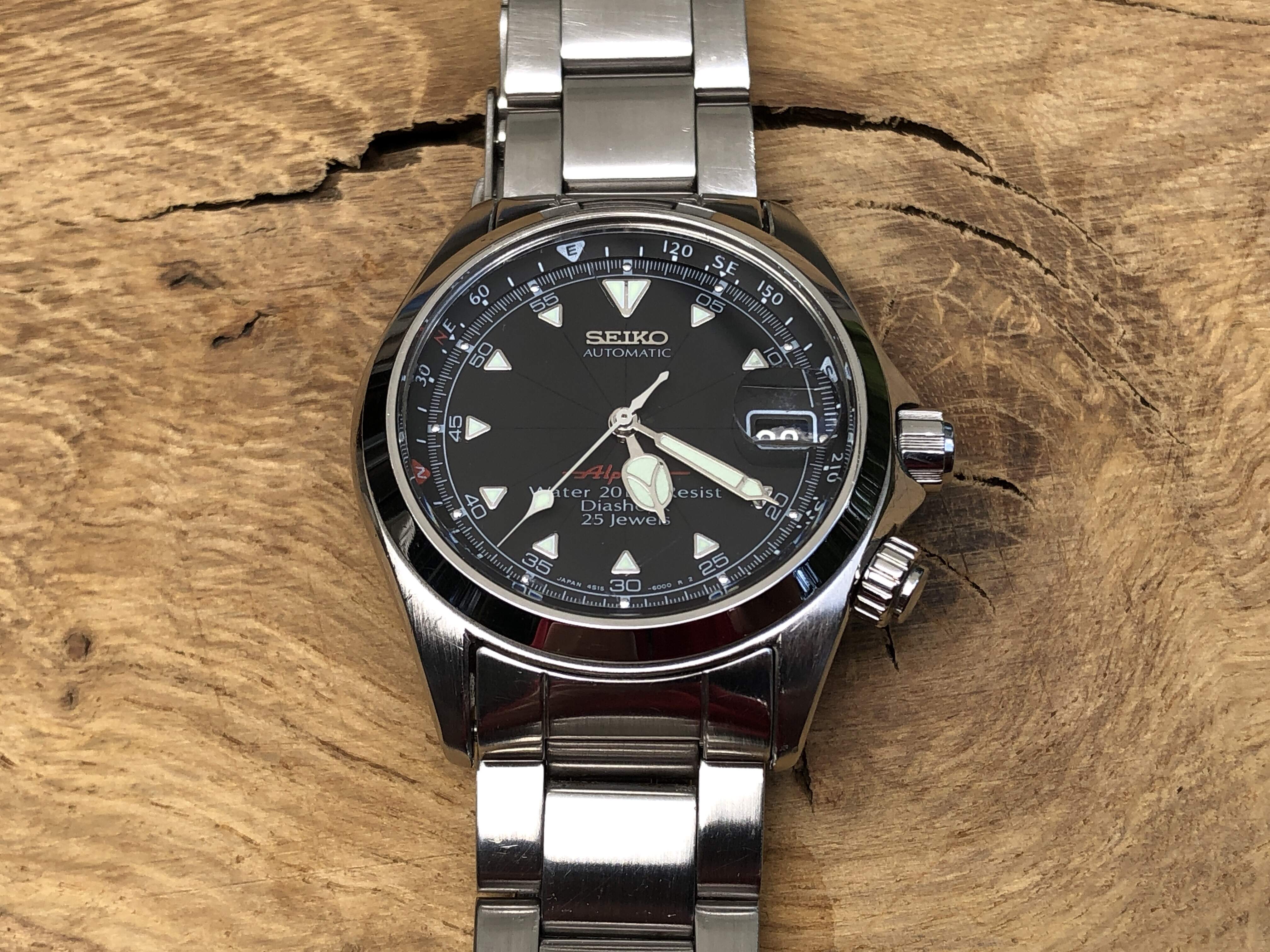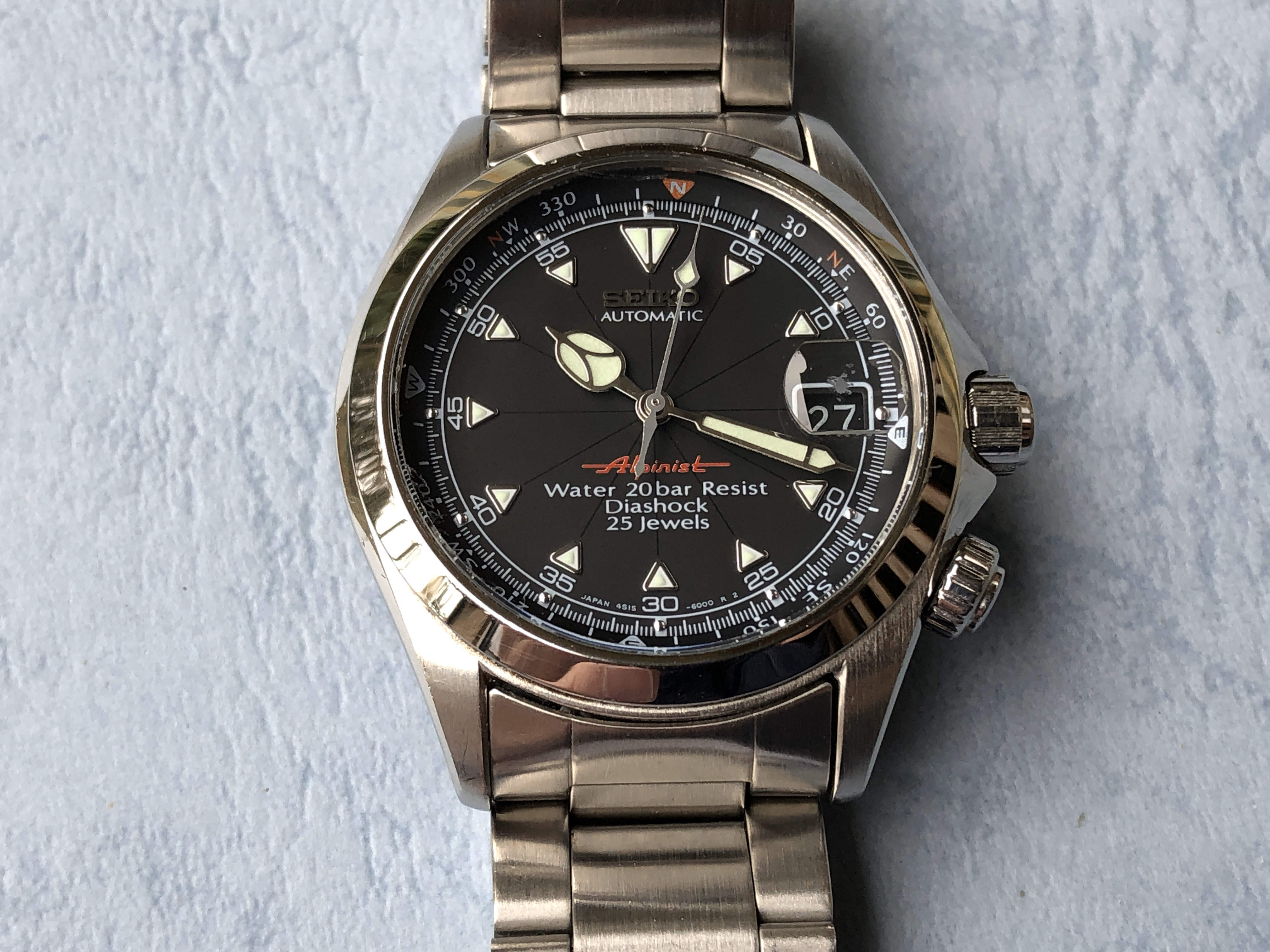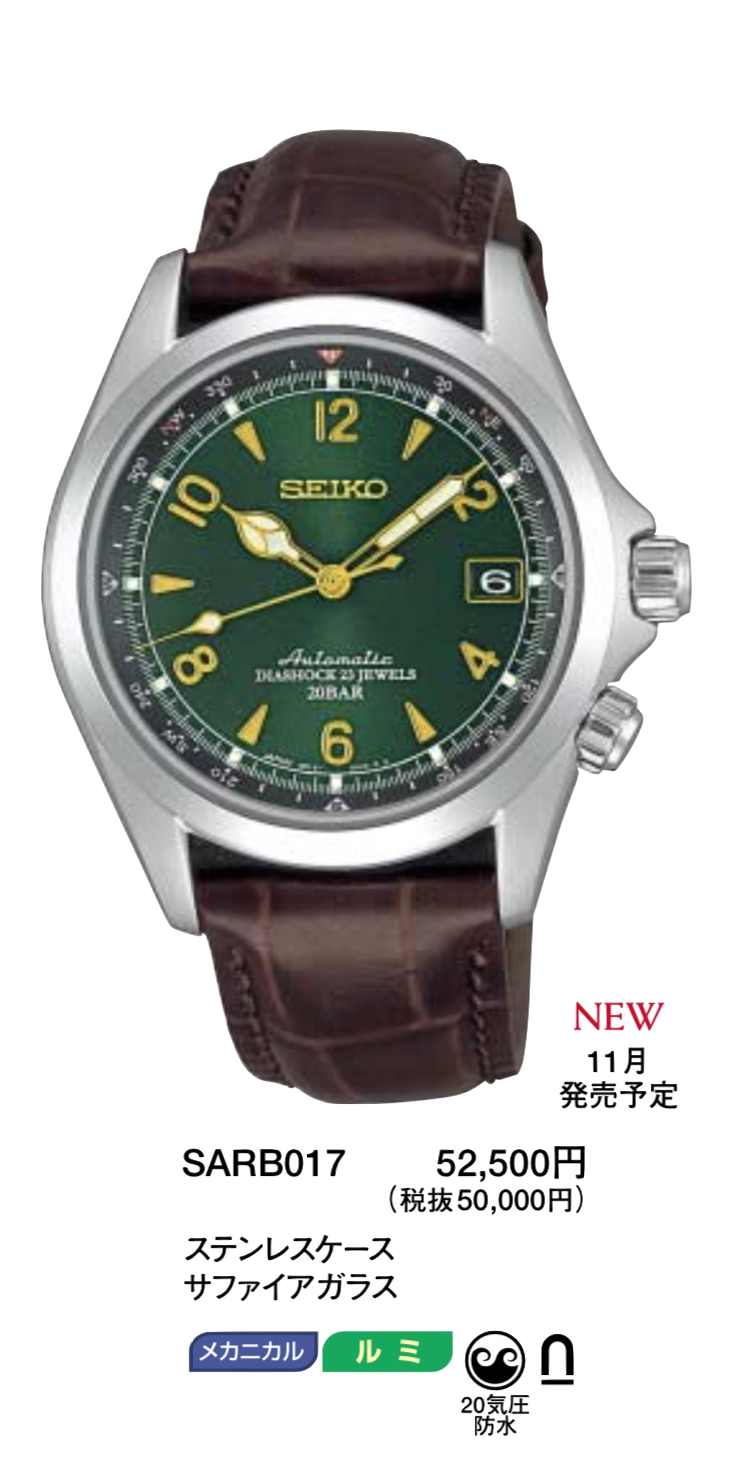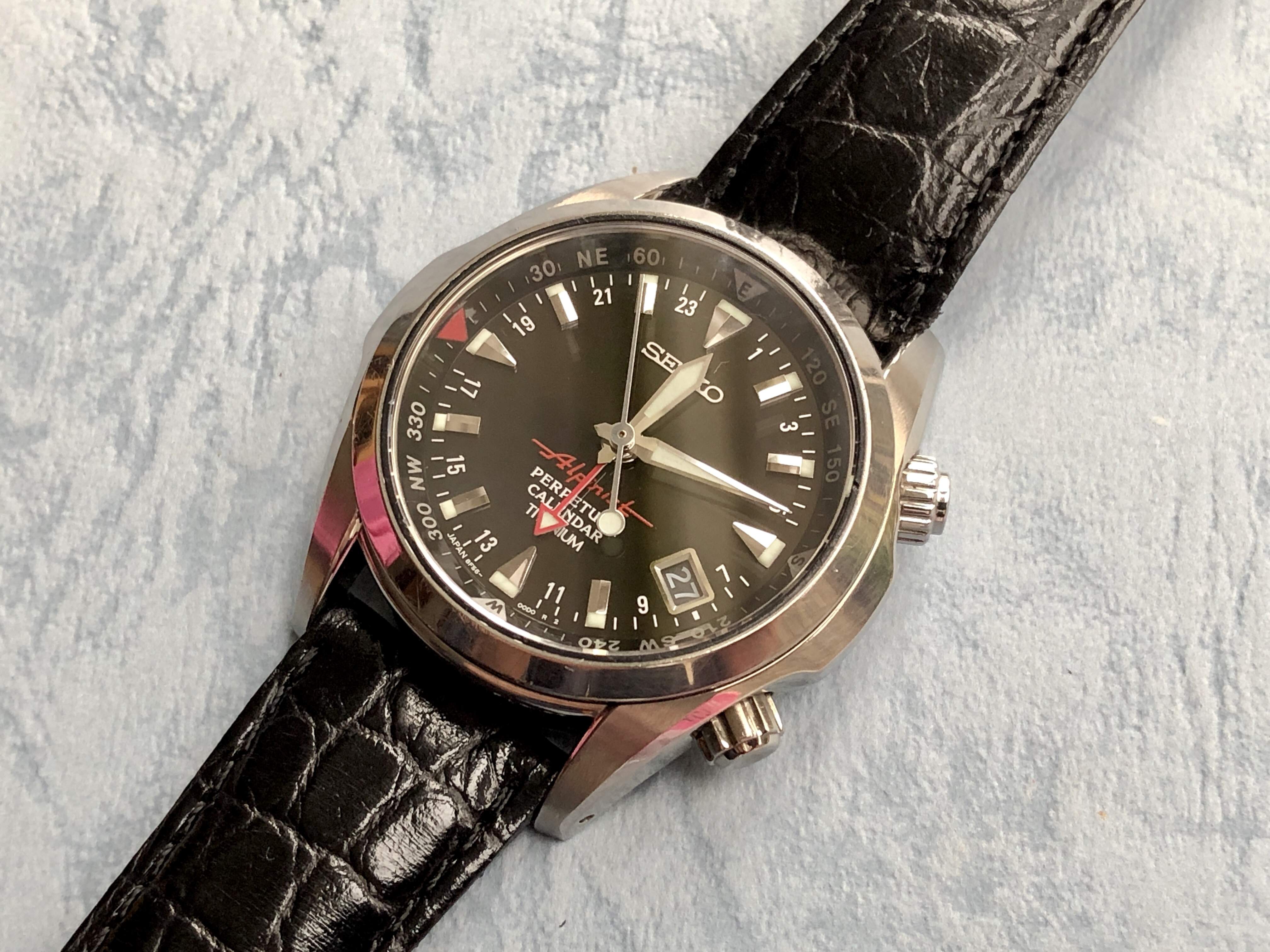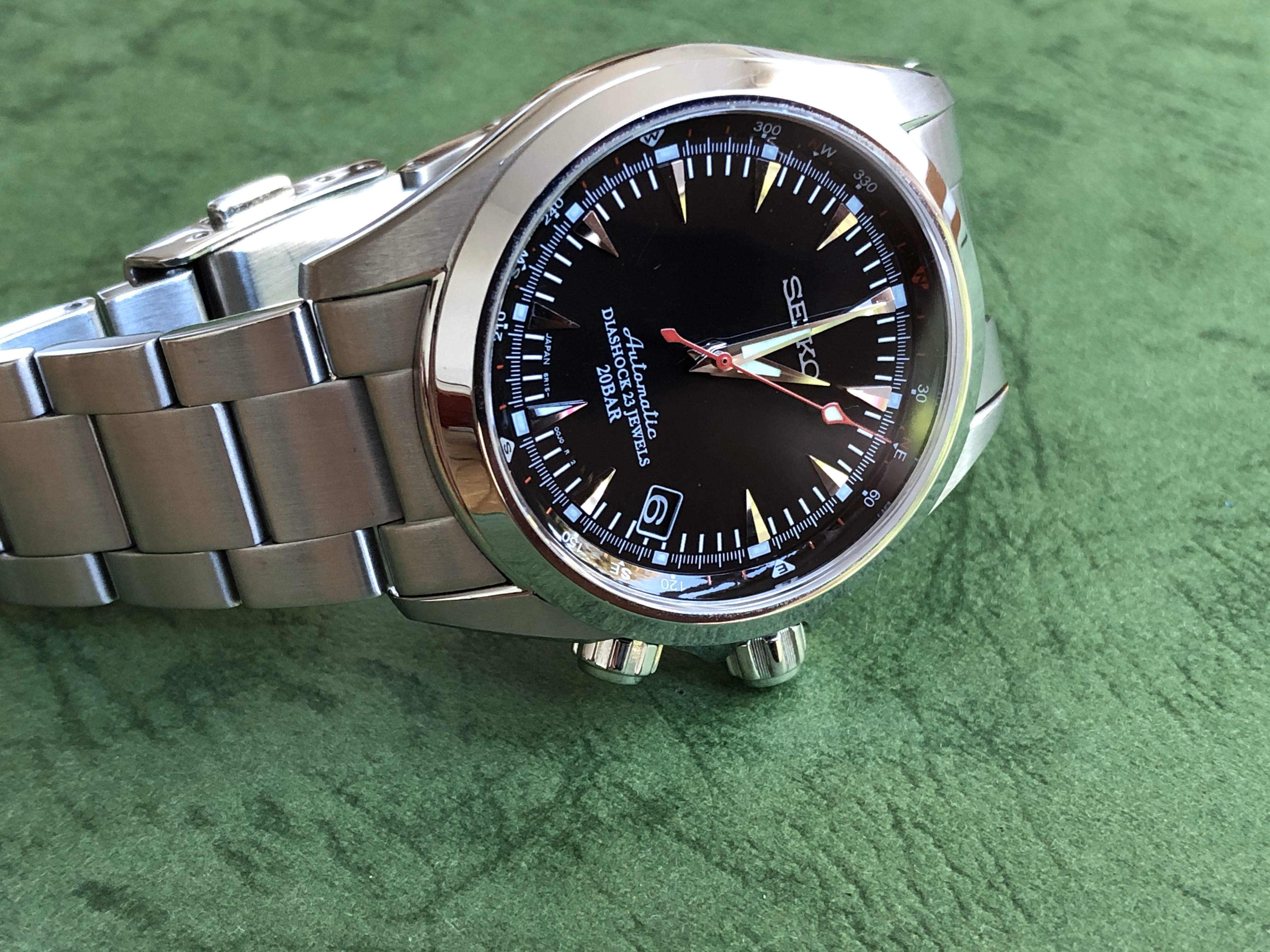The Titans - stronger than mere steel
In 2003, a new Alpinist hit the market sporting the classic black and cream colored face and used the same inner bezel compass as the 1995 Prospex. These 2003 titanium Alpinists are more commonly known as the 8F56s.
Dit bericht bekijken op Instagram
Seiko Red Alpinist 8F56-00DO lumibrite dial (Reserved)
Een bericht gedeeld door Collectionist on vintage Seiko (@collectionist0) op 28 Dec 2019 om 5:44 (PST)
What's not to love?
High accuracy, perpetual calendar, huge 10 year battery life and a GMT related ability to correct for timezone changes or daylight savings time without affecting the minute/second hand. This watch just keeps on ticking without the need, paradoxically, to ever “set the time”. Get whatever models you want and can find with this high end quartz movement and do it now because when they're gone they are gone.
Apparently Seiko decided that the 8F caliber was just too competitive with caliber 8J inside their Grand Seikos, so they were phased out. It is a sobering thought that as even Grand Seiko did not have the calendar programmed into the movement.. which one is the better value?
Indeed, there are many worthy 8F watches to compete with GS, the Red Alpinist for which you pay the same as a vintage Grand Seiko, the Prospex, the Landtrek or the Perpetual calendar. All of these are made of titanium and finished to a very high standard and usability. So, this is not merely a Seiko Titanium quartz
In fact, the Seiko Alpinist GMT Titanium Prospex High Accuracy Quartz (HAQ) Quartz SBCJ019 is one of the rarest models ever made. It is a discontinued model and uses the highly revered 8F56 super accurate quartz movement. The GMT, as it is also known by, has the ability adjust from one time zone to another by way of the hour hand that moves separately from the other hands. Other features include a 10 Year lithium battery, a dual direction rotating inner bezel compass, perpetual calendar and 10 bar water resistance. The GMT is not only a collector’s item; it is a more affordable watch in comparison to other Seiko collectibles which increases its popularity. Model numbers include, SBCJ019, SBCJ021, and SBCJ031. There are four different Alpinist-models which feature the cal.8F56: - There is a cream dial version with numeral dial that comes on a brown leather strap, the hands and markers are in gold colour covered with lume (ref. SBCJ031). - Or you can have two models on the titanium bracelet, one with cream dial that is completely covered with lume and has black hands and stick/triangle markers (ref. SBCJ021). Or one with black dial and silver hands and stick/triangle markers covered with lume (ref. SBCJ019). - There is also a limited edition Alpinist with a blue-ish dial, especially made for the SSASS (ref. SBCJ023) and limited to 500 pieces.There was a special edition released called the SSASS and there were only 500 of them made. This watch was created to pay tribute to Japanese-American mountaineer Ken Noguchi and the foundation he created known as Seven Summits Actions for Sustainable Society (SSASS). Noguchi created this project in order to raise awareness of the growing heaps of garbage that were being accumulated on the mountains that professional climbers and their teams were leaving behind. Since Noguchi and his team had climbed the seven highest peaks in the world, the foundation was well respected and an estimated 7-8 tons of garbage were collected from Mt. Everest and properly disposed of. This was a major breakthrough and continues to provide much needed help in this growing problem. More recently, Noguchi donated 100,000 dollars to the families of the Sherpas whom were killed in avalanches or other accidents that happened on Everest. It is no wonder why the SSASS Alpinist is so highly revered among collectors; it is both wonderfully crafted and reminds people of the respect and admiration that is involved in mountaineering. Probably the most noticeable aspect of the SSASS is the aqua shade of blue used, which represents both the sea and the sky. Both the traditional 8F56 and the SSASS have the Alpinist mountain logo on the back of the case but the SSASS uses a limited edition numbering system.
The SARBs
In 2006, the SARB013, SARB015 and SARB017 were introduced and became an instant success; especially the SARB017.
Dit bericht bekijken op Instagram
Seiko Alpinist SARB017 with 6r15D (For sale)
Een bericht gedeeld door Collectionist on vintage Seiko (@collectionist0) op 21 Feb 2020 om 7:18 (PST)
Each identification number represents a different colour: cream, black and green. The SARB017 (green) model became by far the most popular because it is unique and can be worn in literally any situation, business or casual. The other two variations (especially the creme SARB013) are now much harder to find, possibly making them more valuable today.
All of the 2006 models use a 6R15 Automatic Diashock 23 Jewel movement, provide 20 Bar water resistance and have gold plated hands and numbers. These three models are the longest running models and continue to gain popularity because of their elegance and versatility. There are only a few subtle differences between the three watches. For example, both the cream and green versions use a more traditional hand system with a cathedral hour hand while the black version uses a more modern look which compliments the intense colouring.
Seiko as of 2013 upgraded the 6R15B movement to 6R15C and even D. The upgrades include:
- Added one jewel on main plate, barrel hole (6R20 has that jewel already)
- Modified ratchet sliding spring
- Modified date indicator maintenance plate
- New balance wheel
- New barrel
So, early production of 6R15C has 23J, the late production of 6R15C has 24J. Adding a jewel and modifying the ratchet spring are all related to the upgrading of the barrel (to higher power reserve, so higher torque). The modified date plate is due to complaints of date misalignment. Seiko with this upgraded balance wheel might aim to increase long term stability. The previous 6R15s all have difficulty maintain long term (1-2years) stability in accuracy.
